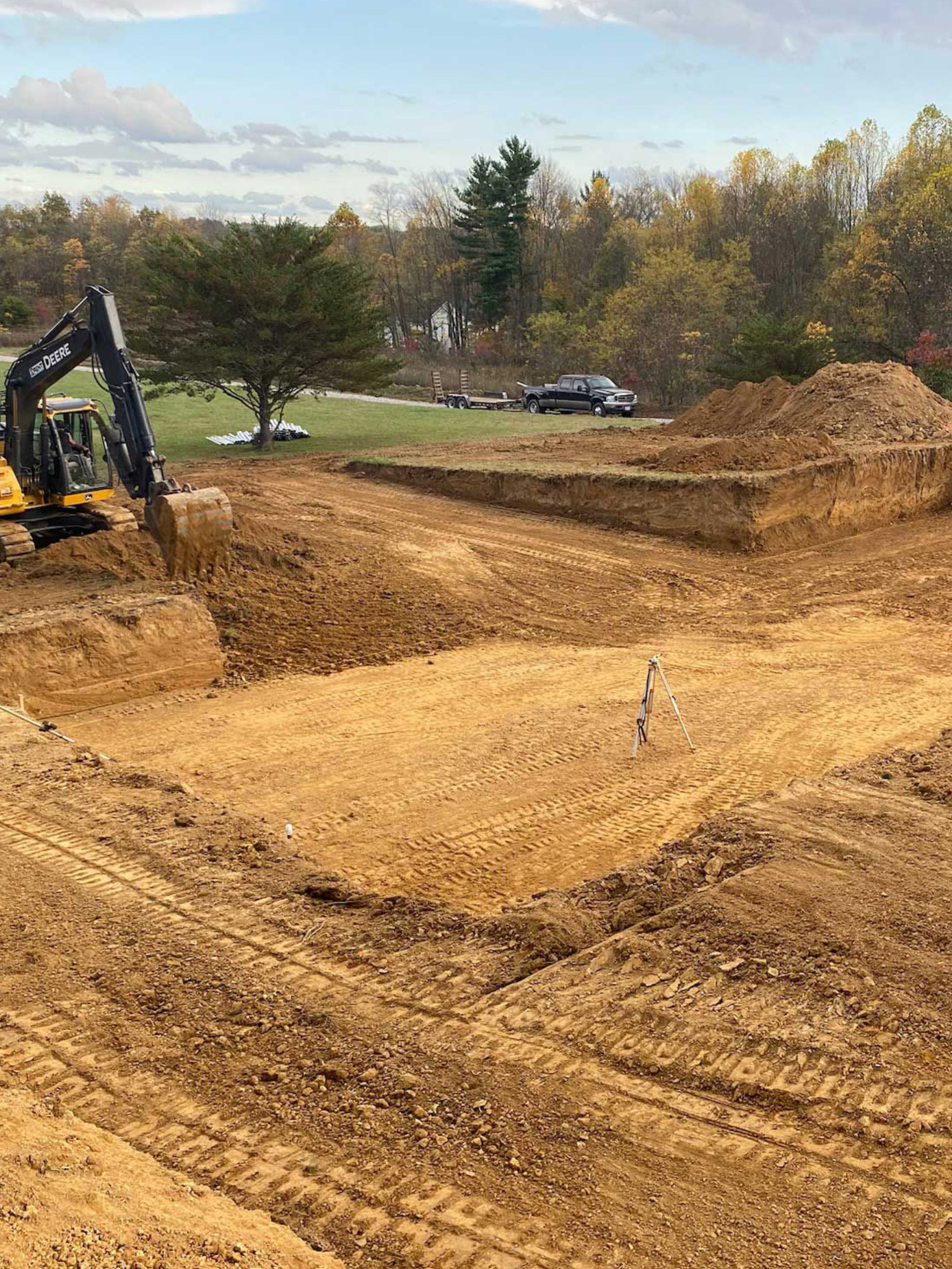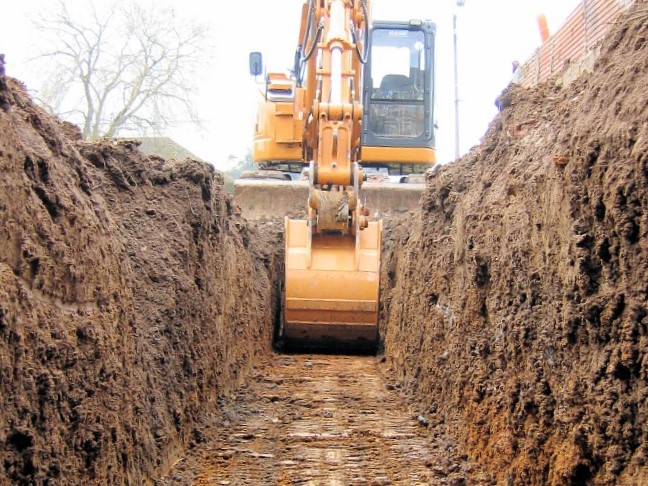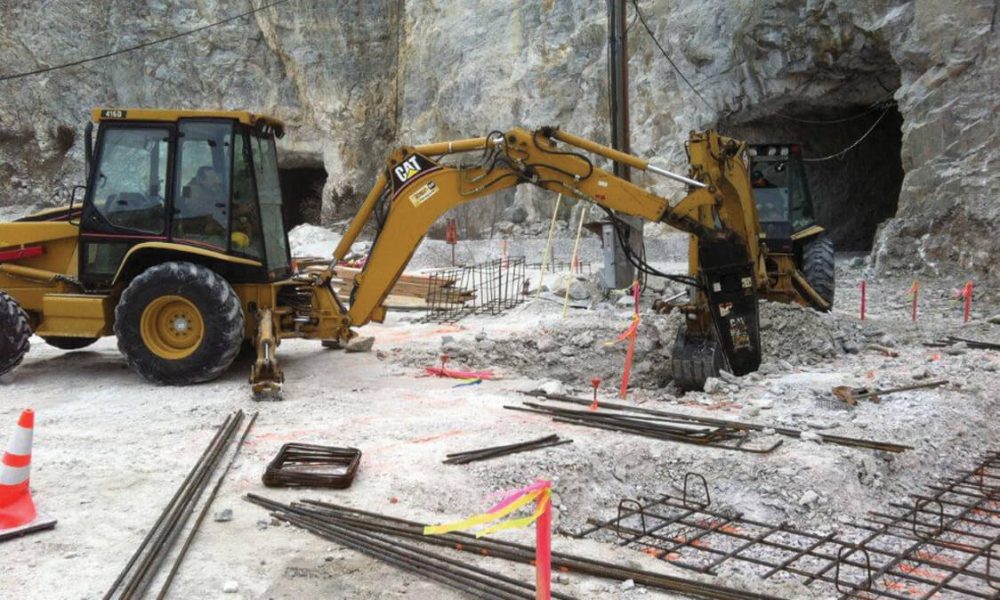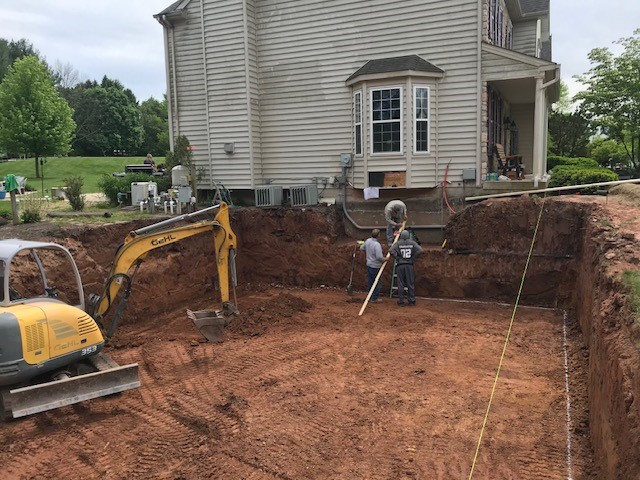Lancaster Trenching - Professional Trenching Solutions in Lancaster, Ohio
Lancaster Trenching - Professional Trenching Solutions in Lancaster, Ohio
Blog Article
In-Depth Expedition: The Scientific Research Behind Superior Excavation Practices
From old hand tools to modern hydraulic excavators, the advancement of excavation strategies has actually been a testament to human ingenuity and technical improvements. What truly establishes exceptional excavation practices apart is a deep understanding of geological principles, paired with the usage of sophisticated devices and methods.
Evolution of Excavation Methods
Throughout history, the development of excavation strategies has actually played an important function ahead of time building and construction techniques and archaeological explorations. From the rudimentary tools utilized by our forefathers to the innovative machinery utilized in modern times, the progression of excavation approaches has substantially changed just how we approach different tasks.
In ancient times, manual labor with fundamental devices such as wheelbarrows, shovels, and pickaxes was the primary technique of excavation. This labor-intensive procedure restricted the deepness and scope of excavations, typically resulting in sluggish progression and restricted accessibility to particular websites. As people progressed, so did the tools and techniques made use of for excavation.
The Industrial Change noted a transforming factor in excavation exercise with the intro of steam-powered equipment. This technology revolutionized the area, enabling faster and extra extensive excavations. In contemporary times, technology plays a critical role in excavation, with developments like GPS systems, drones, and 3D scanning enhancing precision and efficiency in the field. The evolution of excavation strategies continues to form the means we develop, discover, and recognize the globe around us.
Function of Technology in Excavation

The assimilation of innovative technology has fundamentally reinvented the area of excavation, improving accuracy and performance to unmatched levels. One of the key technical developments that has dramatically affected excavation techniques is the use of general practitioner systems. These systems enable precise mapping of excavation sites, allowing operators to properly locate below ground energies and structures. Additionally, the use of telematics in excavation devices has actually made it possible for real-time tracking of device performance, bring about proactive upkeep and raised operational productivity.
Moreover, the development of 3D modeling and simulation software program has structured the planning process for excavation jobs. Drivers and engineers can now imagine the whole excavation procedure prior to damaging ground, optimizing and identifying potential challenges workflow. Along with this, the implementation of drones in excavation activities has facilitated airborne surveys, volumetric dimensions, and website assessments with unparalleled rate and precision.
Geological Concepts in Excavation
An understanding of geological concepts is essential for guaranteeing the architectural honesty and security of excavation sites. Geological elements play an important function in identifying the expediency and security of excavation projects (lancaster excavation). One vital geological concept to think about is the type of dirt or rock existing at the website. Various soil types, such as clay, sand, or crushed rock, have differing levels of security and call for various excavation methods. For example, natural dirts like clay may require added assistance to stop collapses, while sandy dirts may be susceptible to erosion throughout excavation.
Moreover, the geological structure of the area, consisting of mistakes, fractures, and rock developments, should be meticulously evaluated to determine possible dangers and obstacles. Digging deep into near fault lines or unpredictable rock formations can result in instability and possible risks. By performing extensive geological studies and analysis, engineers and excavators can create techniques to alleviate risks and guarantee the effective conclusion of click to investigate excavation projects. Eventually, including geological concepts into excavation methods is critical for achieving risk-free, reliable, and lasting results.

Latest Tools for Excavation
In the world of excavation methods, modern technologies in devices have actually reinvented the effectiveness and precision of excavation processes. One of the most recent tools making waves in the sector is the usage of drones geared up with advanced imaging technology. These drones can give in-depth aerial surveys of excavation websites, using real-time data on topography and potential threats. This info aids in far better planning and decision-making during the excavation procedure.
One more cutting-edge tool obtaining appeal is the implementation of 3D printing modern technology for producing customized excavation tools. This permits the production of specialized devices that are tailored to the specific requirements of a task, boosting efficiency and lowering downtime.
Additionally, innovations in products science have actually brought about the growth of stronger and much more long lasting excavation tools. dump truck companies in ohio. Tungsten carbide-tipped excavator accessories, for instance, deal remarkable performance in challenging ground conditions, enhancing efficiency on-site
Scientific research's Influence on Excavation Practices

Additionally, improvements in products scientific research have caused the production of stronger, a lot more sturdy excavation devices and equipment. The use of composite products in diggers and shovels has actually enhanced their performance and durability, ultimately raising productivity on excavation websites. In addition, scientific study on dirt auto mechanics and geotechnical design has actually offered important insights right into soil behavior, permitting excavation pop over here specialists to make enlightened choices pertaining to excavation methods and soil stabilization techniques. On the whole, scientific research proceeds to drive advancement and enhancement in excavation techniques, making excavation jobs more efficient, affordable, and lasting.

Final Thought
To conclude, the evolution of excavation techniques has actually been substantially affected by developments in technology and a deeper understanding of geological concepts. The most recent tools and equipment made use of in excavation have actually improved performance and precision in the field. The application of clinical understanding has dramatically improved excavation practices, bring about much more effective and lasting techniques for excavating different sorts of products.
In the realm of excavation practices, contemporary innovations in devices have actually transformed the efficiency and precision of excavation processes. By leveraging clinical concepts, the excavation sector has actually been able to dramatically boost performance, accuracy, and over here safety in excavation procedures. GPR permits excavation groups to non-invasively check and map subsurface structures, utilities, and potential hazards, enabling them to intend excavation tasks with higher precision and reduced threat of crashes.
In addition, scientific research on dirt auto mechanics and geotechnical engineering has actually offered valuable understandings into dirt habits, allowing excavation specialists to make educated decisions relating to excavation methods and soil stablizing techniques. On the whole, science proceeds to drive development and renovation in excavation methods, making excavation projects a lot more efficient, economical, and lasting.
Report this page